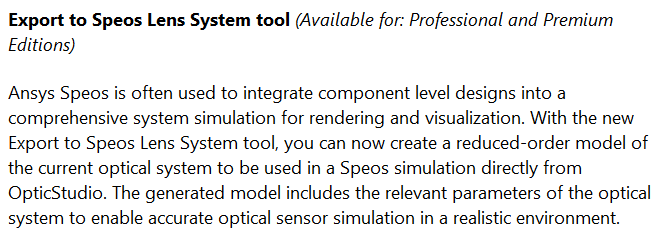Dear Community,
My problem is the following, I am using SPEOS to model LiDAR light profile when trasnverse throgh a piece simple glass and reach the object and bounce back and the light to be collected by receiver in LiDAR
How can I import light field as an input to SPEOS from Zemax, I do not want create optical system myself in Zemax to have a light field which will be input to my SPEOS model, I heard there is interportability between SPEOS & Zemax.
Can any one throw light and help
sridhar








